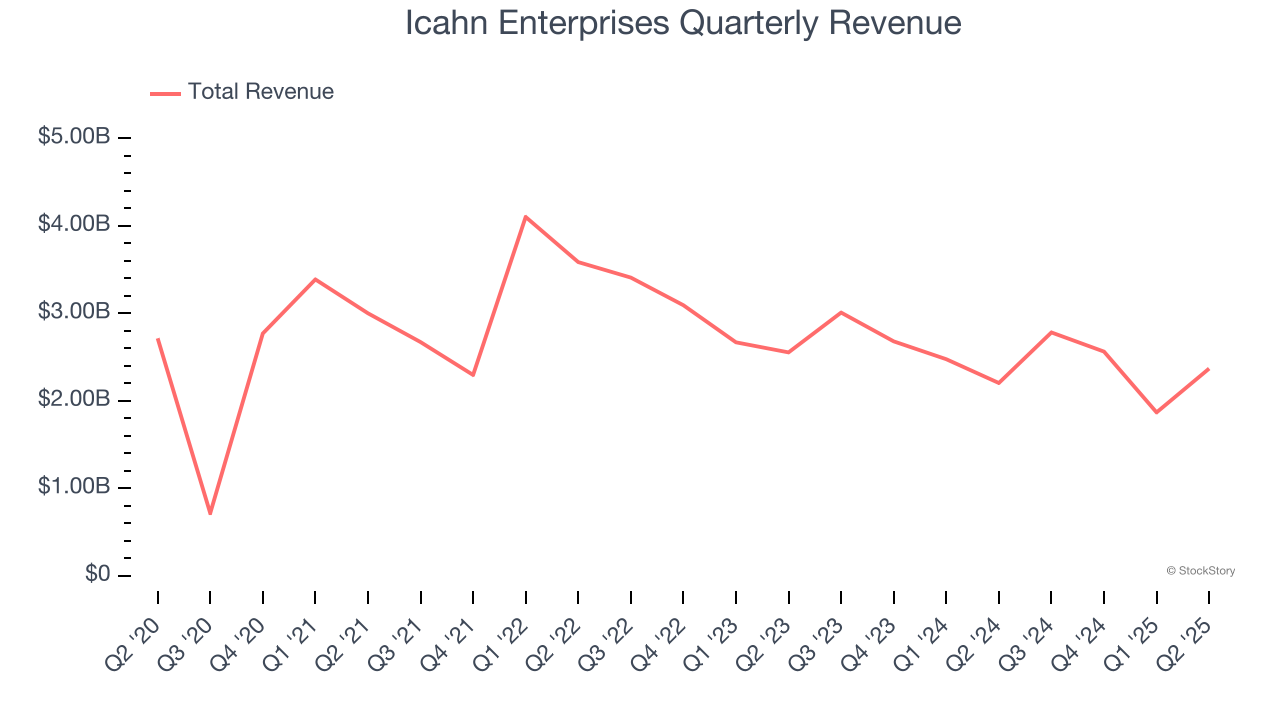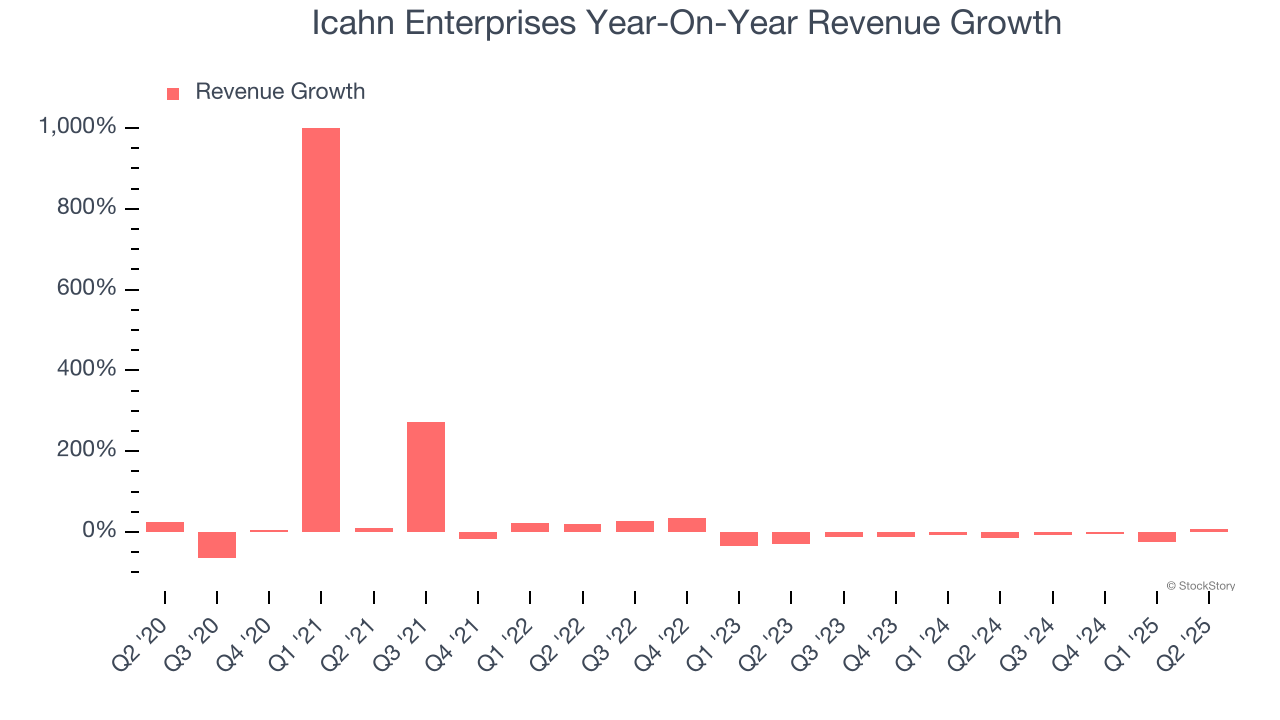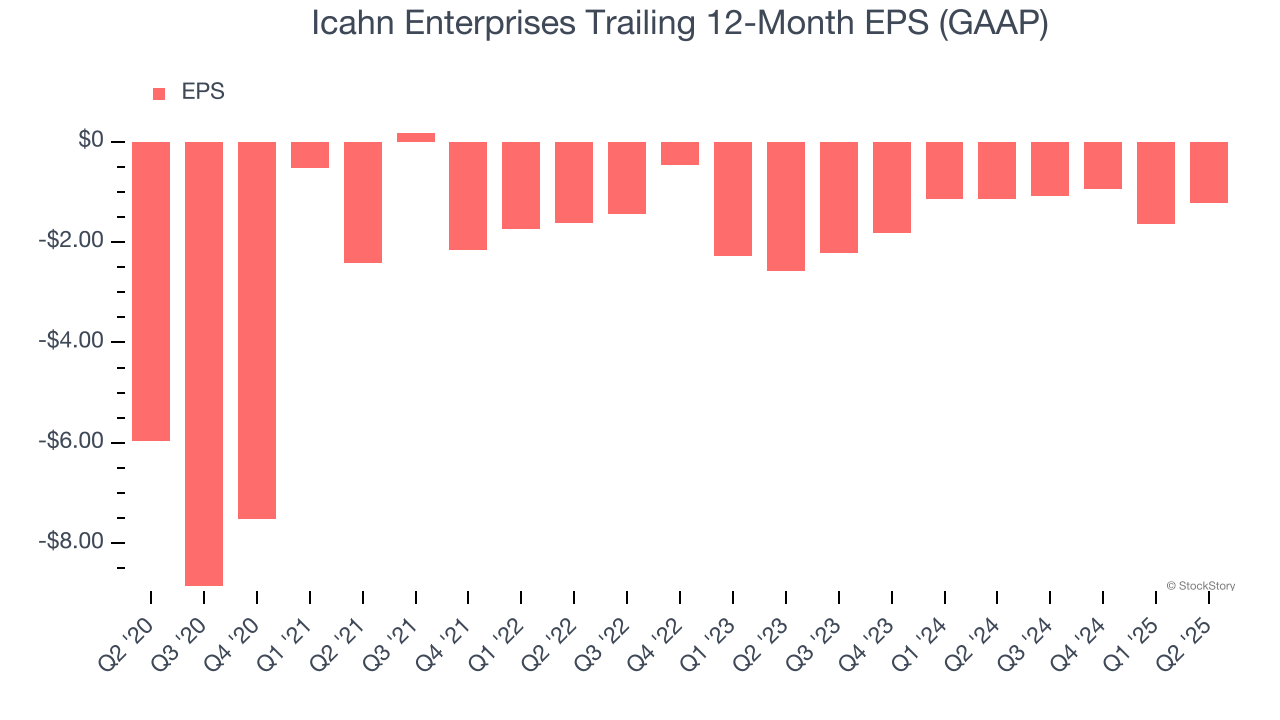
Holding company and industrial conglomerate Icahn (NYSE: IEP) missed Wall Street’s revenue expectations in Q2 CY2025, but sales rose 7.5% year on year to $2.37 billion. Its GAAP loss of $0.30 per share was significantly below analysts’ consensus estimates.
Is now the time to buy Icahn Enterprises? Find out by accessing our full research report, it’s free.
Icahn Enterprises (IEP) Q2 CY2025 Highlights:
- Revenue: $2.37 billion vs analyst estimates of $2.39 billion (7.5% year-on-year growth, 0.9% miss)
- EPS (GAAP): -$0.30 vs analyst estimates of $0.14 (significant miss)
- Adjusted EBITDA Margin: -1.8%, up from -7% in the same quarter last year
- Market Capitalization: $4.90 billion
Company Overview
Founded in 1987, Icahn Enterprises (NASDAQ: IEP) is a diversified holding company primarily engaged in investment and asset management across various sectors.
Revenue Growth
Reviewing a company’s long-term sales performance reveals insights into its quality. Even a bad business can shine for one or two quarters, but a top-tier one grows for years. Regrettably, Icahn Enterprises’s sales grew at a tepid 5.4% compounded annual growth rate over the last five years. This fell short of our benchmark for the industrials sector and is a rough starting point for our analysis.

Long-term growth is the most important, but within industrials, a half-decade historical view may miss new industry trends or demand cycles. Icahn Enterprises’s performance shows it grew in the past but relinquished its gains over the last two years, as its revenue fell by 9.6% annually. 
This quarter, Icahn Enterprises’s revenue grew by 7.5% year on year to $2.37 billion, missing Wall Street’s estimates.
Looking ahead, sell-side analysts expect revenue to grow 7% over the next 12 months. While this projection indicates its newer products and services will spur better top-line performance, it is still below the sector average.
Here at StockStory, we certainly understand the potential of thematic investing. Diverse winners from Microsoft (MSFT) to Alphabet (GOOG), Coca-Cola (KO) to Monster Beverage (MNST) could all have been identified as promising growth stories with a megatrend driving the growth. So, in that spirit, we’ve identified a relatively under-the-radar profitable growth stock benefiting from the rise of AI, available to you FREE via this link.
Operating Margin
Operating margin is a key measure of profitability. Think of it as net income - the bottom line - excluding the impact of taxes and interest on debt, which are less connected to business fundamentals.
Icahn Enterprises was roughly breakeven when averaging the last five years of quarterly operating profits, one of the worst outcomes in the industrials sector. This result isn’t too surprising given its low gross margin as a starting point.
Analyzing the trend in its profitability, Icahn Enterprises’s operating margin decreased by 5.1 percentage points over the last five years. This raises questions about the company’s expense base because its revenue growth should have given it leverage on its fixed costs, resulting in better economies of scale and profitability. Icahn Enterprises’s performance was poor no matter how you look at it - it shows that costs were rising and it couldn’t pass them onto its customers.

This quarter, Icahn Enterprises generated an operating margin profit margin of 1.9%, up 17.1 percentage points year on year. The increase was driven by stronger leverage on its cost of sales (not higher efficiency with its operating expenses), as indicated by its larger rise in gross margin.
Earnings Per Share
Revenue trends explain a company’s historical growth, but the long-term change in earnings per share (EPS) points to the profitability of that growth – for example, a company could inflate its sales through excessive spending on advertising and promotions.
Although Icahn Enterprises’s full-year earnings are still negative, it reduced its losses and improved its EPS by 27.1% annually over the last five years. The next few quarters will be critical for assessing its long-term profitability.

Like with revenue, we analyze EPS over a shorter period to see if we are missing a change in the business.
For Icahn Enterprises, its two-year annual EPS growth of 31% was higher than its five-year trend. We love it when earnings improve, but a caveat is that its EPS is still in the red.
In Q2, Icahn Enterprises reported EPS at negative $0.30, up from negative $0.72 in the same quarter last year. Despite growing year on year, this print missed analysts’ estimates. Over the next 12 months, Wall Street is optimistic. Analysts forecast Icahn Enterprises’s full-year EPS of negative $1.23 will flip to positive $0.71.
Key Takeaways from Icahn Enterprises’s Q2 Results
We struggled to find many positives in these results. Its EPS missed and its revenue fell slightly short of Wall Street’s estimates. Overall, this quarter could have been better. The stock remained flat at $8.98 immediately following the results.
Is Icahn Enterprises an attractive investment opportunity right now? We think that the latest quarter is only one piece of the longer-term business quality puzzle. Quality, when combined with valuation, can help determine if the stock is a buy. We cover that in our actionable full research report which you can read here, it’s free.





